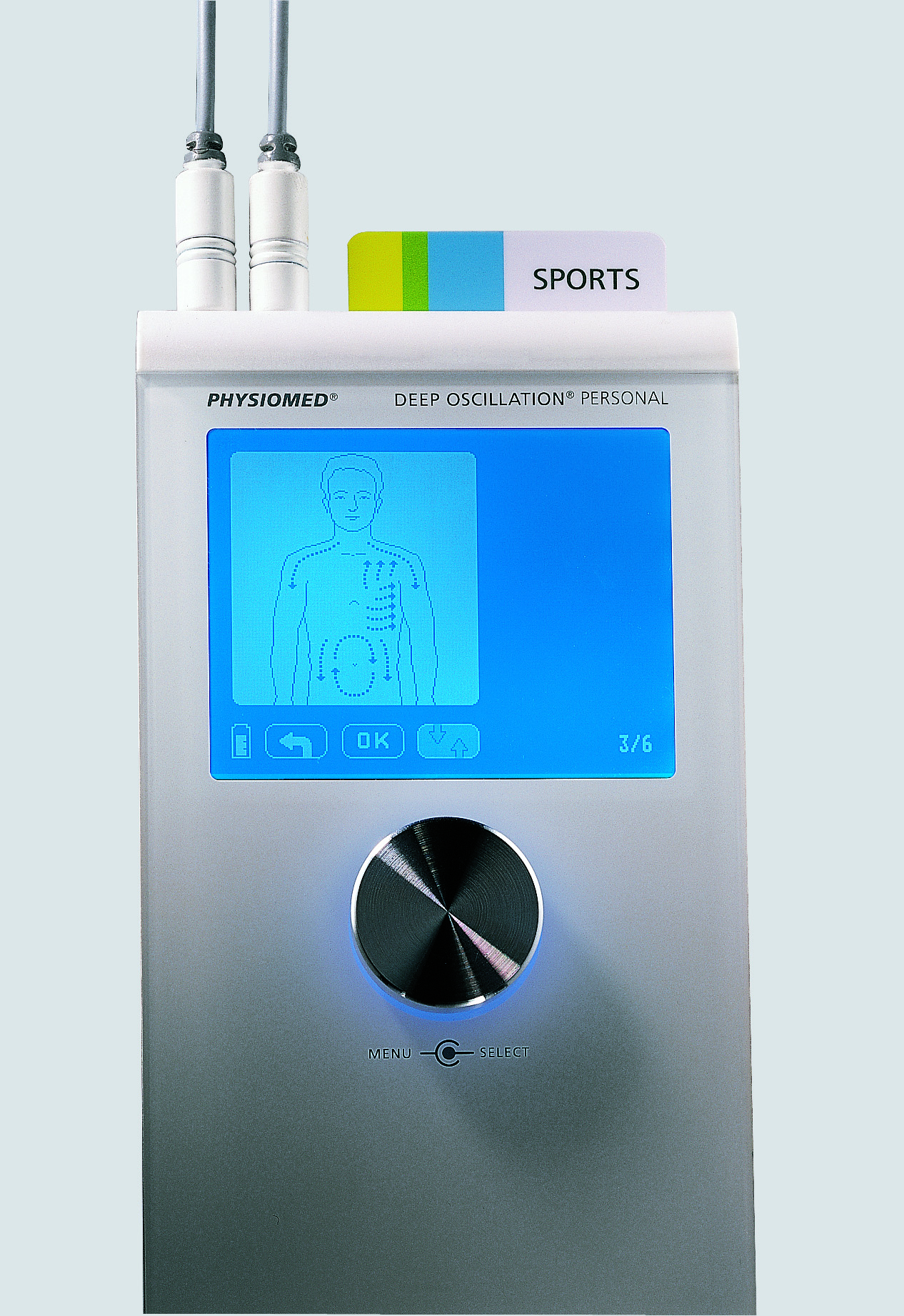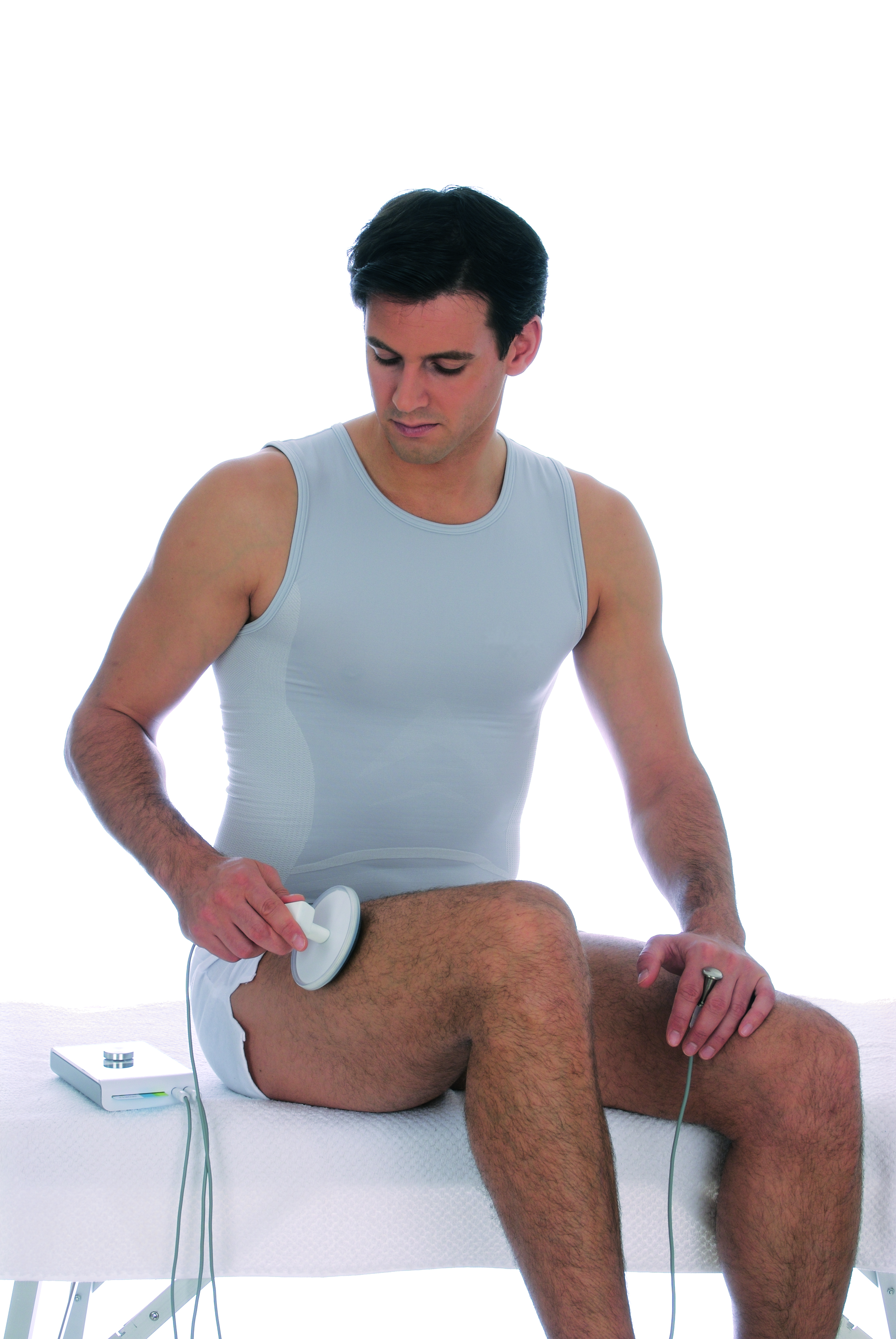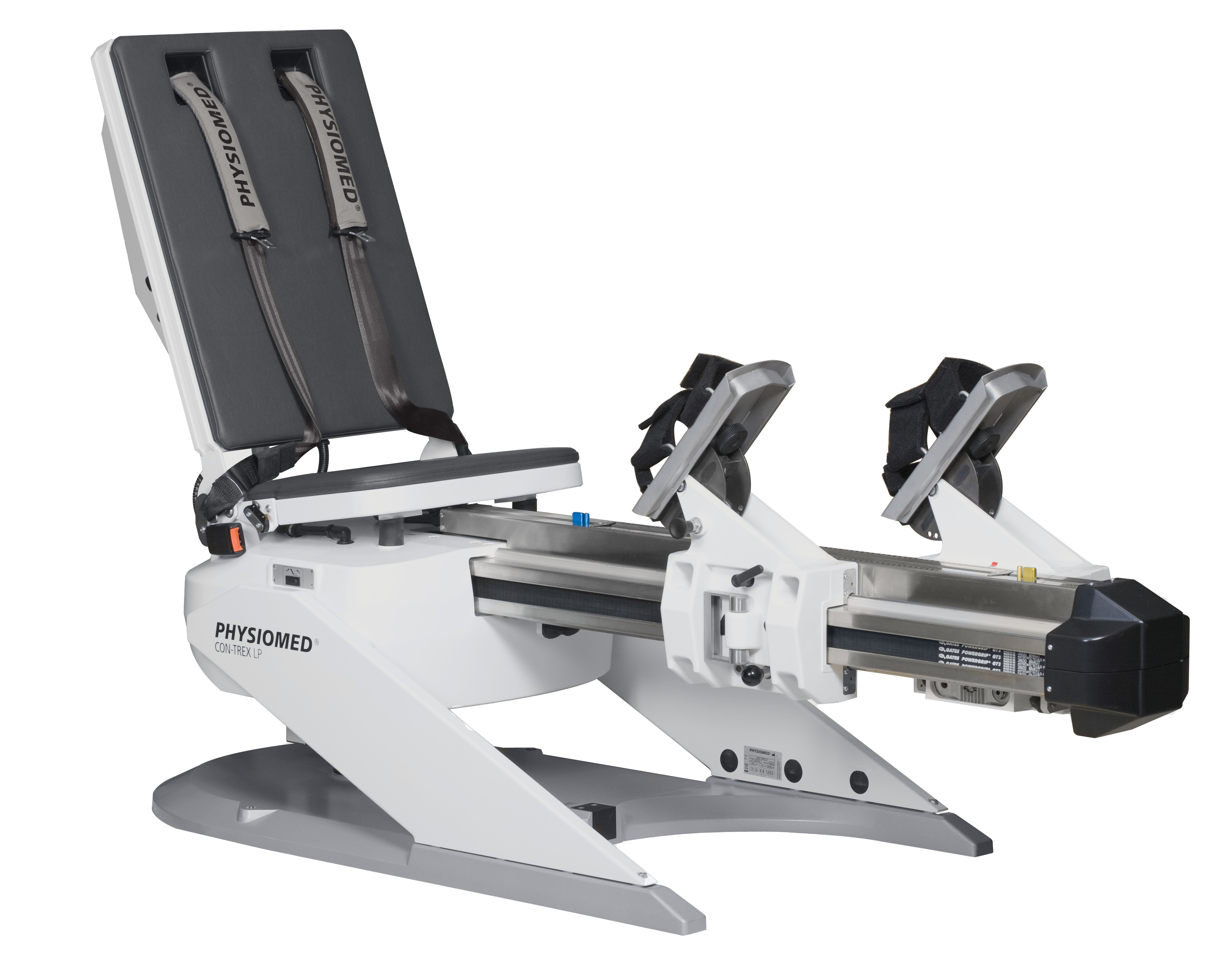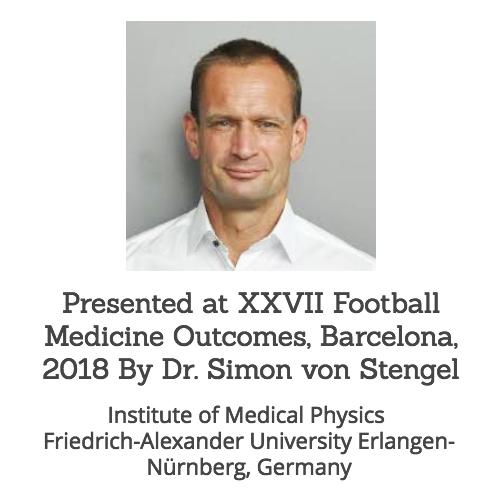New Deep Oscillation Study Presented at XXVII Football Medicine Outcomes, Barcelona, 2018
For nearly 30 years, deep oscillation (also known as DEEP OSCILLATION® or HIVAMAT®) has been used in sports to promote regeneration after intensive training and competitions. Now there is the first empirical proof from Erlangen. Dr. Simon von Stengel and his team studied the maximum isokinetic flexor and extensor force of leg muscles of football players (measured with the CON-TREX® LP isokinetic testing, training and therapy system), the perceived exertion rating, and creatine kinase serum levels. In addition to a positive trend regarding the latter parameter, the study showed a statistically significant difference in favor of the deep oscillation group for the parameters maximum isokinetic force and effort evaluation (according to the Borg scale).
READ ON LINKEDIN PULSE PUBLISHED 20.08.2018
Authors: Von Stengel, S.; Weissenfels, A.; Teschler, M.; Willert, S.; Kemmler, W
Institute of Medical Physics, University of Erlangen, Germany
Abstract
Introduction
Association football (soccer) is a high-intensity, intermittent-sprint sport, which implies very high demands on different components of motor performance. To recuperate entirely after a match takes more than 72h [1], however, the recovery time between matches is often not long enough to restore completely. Insufficient recovery may result in a reduced performance in competitions, suboptimal performance development in the training process and a higher risk of injuries. A wide range of recovery modalities is discussed to improve recovery in soccer players. The purpose of this study was to evaluate the effects of Deep Oscillation (DO) self-treatment on recovery after fatiguing soccer training. Deep Oscillation is a unique method that is characterized by an alternating electrostatic field built up between the tissue of the patient and an applicator or the gloved hands of the therapist. When moving over the skin electrostatic forces alternately pull and release the tissue, which results in a deep resonance vibration that penetrates all tissue layers [2].


The DEEP OSCILLATION® Personal SPORTS used in
self treatment by players in the study
Methods
In a randomized crossover study design including 8 male soccer players (22 ± 3.3 years; 5th German division of the 10) the following parameters were evaluated directly before and 48h after an fatiguing soccer specific exercise: Maximum isokinetic leg extension and flexion strength (Con-Trex® Leg Press, Physiomed, Schnaittach, Germany), rating of perceived exertion (RPE) during isokinetic testing (Borg scale 6-20) and creatine kinase (CK) serum levels. Delayed Onset Muscle Soreness (DOMS; visual analogue scale 1-10) was recorded 24 and 48h post-exercise. At random, half of the group performed a DO self-treatment twice a day for 15 minutes each (4 applications in 48h; DO mobile, Physiomed, Schnaittach, Germany), whereas the other half got no intervention. In cross-over design the same procedure was conducted again 4 weeks later, and now the participants who had received no treatment in the first study phase carried out DO treatment in the second study phase and vice versa.

CON-TREX® LP isokinetic testing, training and therapy system (PHYSIOMED)
Results
Repeated measures AVOVA revealed a significant treatment x time interaction for maximum leg flexion strength (p = 0.03) at a high effect size. The changes in maximum leg flexion strength between baseline and follow up were 125 ± 206 N in the DO group compared to -115 ± 194 N in the control group. There was also a treatment x time interaction with regard to the RPE during the isokinetic maximum leg strength tests (p = 0.03). In the follow-up test the DO group stated the same effort (Borg -0.13 ± 0.64), whereas the control group rated the follow up test as more strenuous (+1.13 ± 1.36). There was a trend for a better restitution to baseline values for maximum leg extension strength (DO: -31 ± 165 N vs. CG: -138 ± 212 N; p = 0.028 and CK values (DO: 72 ± 331 U/ml vs. CG: 535 ± 797 U/ml; p = 0.15), however, values did not reach the level of significance. There was also just a trend for a lower level in DOMS in the DO group without significance.
Conclusions
DO seems to be a promising method to accelerate the time-course of peripheral recovery of the muscle. In the present study we found significant effects of Do on maximum leg flexion strength and perceived rate of exertion. Other variables showed a consistent trend in favour of DO compared to the control group without significance. It can be hypothesized that the small sample size could have resulted in a beta error, which means that the statistical test shows no significant difference though a true difference does in fact exist. Accordingly, studies with larger sample sizes are desirable for the future to check the hypothesis. Because of high time and personal requirements, classic massage techniques are rarely used on a regular basis to promote regeneration in soccer players. In this context DO could be a time- and personal-efficient alternative, since the players can easily use DO as a self-treatment.
References
1 Silva JR, Rumpf MC, Hertzog M, Castagna C, Farooq A, Girard O, Hader K (2017) Acute and Residual Soccer Match-Related Fatigue: A Systematic Review and Meta-analysis. Sports medicine (online first).
2 Boisnic S. BMC (2013) Anti-inflammatory and draining effect of the Deep Oscillation device tested clinically and on a model of human skin maintained in survival condition. Eur J Dermatol 1:59-63
For nearly 30 years, deep oscillation (also known as DEEP OSCILLATION® or HIVAMAT®) has been used in sports to promote regeneration after intensive training and competitions


